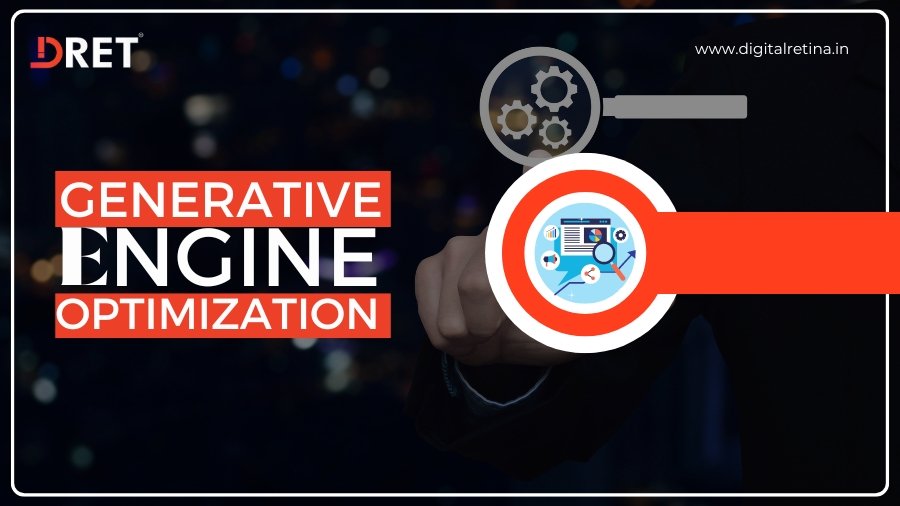Generative Engine Optimization: and How Does It Relate to SEO?

Rise of Generative Engine Optimization
In the evolving landscape of digital marketing, Search Engine Optimization (SEO) has long been the backbone for improving online visibility. However, a new concept is emerging that promises to complement traditional SEO strategies—Generative Engine Optimization (GEO). As the digital ecosystem continues to grow more sophisticated, understanding the relationship between these two optimization strategies can help businesses stay ahead in the competitive online environment.
In this blog, we’ll dive into the concept of Generative Engine Optimization, how it works, and how it intersects with SEO to create more effective and efficient digital marketing strategies.
What is Generative Engine Optimization (GEO)?
Generative Engine Optimization refers to the practice of optimizing generative AI tools, such as text or image generation models, for specific outputs that align with business or content creation goals. Unlike traditional SEO, which focuses on optimizing websites and content for search engines, GEO is aimed at ensuring that AI-generated content is coherent, relevant, and useful for users or clients.
Generative AI models, like GPT (Generative Pre-trained Transformers), can create content automatically based on user inputs. When integrated into content creation workflows, these tools can accelerate the production of blog posts, social media content, and even complex technical writing. Optimizing these engines ensures that the content produced meets quality standards while adhering to SEO guidelines.
How Does Generative Engine Optimization (GEO) Relate to SEO?
Though GEO is a relatively new concept, it shares several parallels with traditional SEO. Let’s explore some key areas where the two intersect:
1. Content Creation and SEO Keywords
One of the most labor-intensive aspects of SEO is content creation, which requires careful consideration of keywords, meta descriptions, and search intent. GEO leverages AI to generate content faster while still incorporating critical SEO keywords. This ensures that the content is not only informative but also ranks well on search engines.
By optimizing the AI model’s understanding of SEO best practices, you can streamline content creation without sacrificing quality. For instance, you can instruct generative engines to include high-value keywords and semantic phrases naturally within the generated content, just as you would when writing manually.
2. Scaling Content for Long-Tail Keywords
Long-tail keywords are crucial for capturing niche audiences and driving targeted traffic to your website. Traditional SEO techniques require time and effort to create a variety of content pieces that cater to these specific queries. By using GEO, businesses can scale their content production for long-tail keywords, producing high-quality articles, blogs, and landing pages faster than ever.
The AI’s ability to generate multiple variations of content allows SEO specialists to target a broader range of keywords, ultimately improving organic search rankings across multiple niches.
3. Optimizing User Experience

User experience (UX) plays a vital role in modern SEO, with search engines like Google factoring it into their ranking algorithms. Generative Engine Optimization enhances UX by providing tools that create personalized, relevant, and engaging content tailored to each user’s preferences.
For instance, a GEO-optimized AI can generate personalized product descriptions or blog recommendations, making the website more dynamic and user-friendly. This personalization can lead to higher engagement rates and longer session durations—factors that positively influence SEO performance.
4. Automating Meta Data and Structured Content
SEO optimization isn’t just about producing readable content. It’s also about ensuring that the technical aspects—such as meta descriptions, alt tags, and structured data—are optimized for search engines. Generative Engine Optimization can automate these repetitive tasks, allowing SEO experts to focus on higher-level strategies. The AI can automatically generate SEO-friendly meta descriptions, alt text for images, and even FAQ schema to improve your site’s performance on search engines.
5. Generating High-Quality Backlink-Worthy Content
Backlinks are a cornerstone of any solid SEO strategy. They signal to search engines that your website is authoritative and trustworthy. To attract quality backlinks, your site must have valuable content that other websites want to reference.
With GEO, AI can help you quickly create content that is informative, well-researched, and shareable. This increases the chances of earning organic backlinks, further boosting your site’s SEO ranking.
The Future of SEO with Generative Engine Optimization
As AI technology continues to advance, the line between SEO and Generative Engine Optimization is likely to blur. AI-generated content will play an increasingly important role in shaping the future of digital marketing, and businesses that leverage GEO effectively will have a competitive edge.

However, it’s important to note that human oversight will remain crucial. AI can assist in content generation, but manual adjustments will be necessary to ensure that the content is accurate, resonates with your audience, and adheres to ethical standards.
Key Takeaways:-
- Generative Engine Optimization (GEO) is the process of optimizing AI-generated content to align with business goals and user needs.
- GEO complements SEO by accelerating content creation, scaling keyword strategies, and automating technical SEO tasks.
- Both GEO and SEO aim to improve user experience, engagement, and search engine visibility, but GEO leverages AI to achieve these goals more efficiently.
- The future of digital marketing will likely see more integration between AI-driven content tools and traditional SEO practices, but human input remains essential.
Conclusion
The rise of Generative Engine Optimization presents a new frontier for businesses looking to optimize their digital marketing strategies. By understanding how GEO relates to SEO, companies can leverage both to enhance their content production, improve user engagement, and rank higher on search engines. As these two optimization strategies evolve, staying ahead of the curve will ensure that your brand remains visible and competitive in an ever-changing digital landscape.
digitalretina

Brand Architect's Growth Engineer
What Are the Different Types of SEO in Digital Marketing?
Generative Engine Optimization: and How Does It Relate to SEO?


